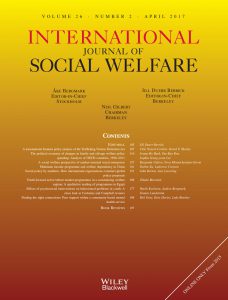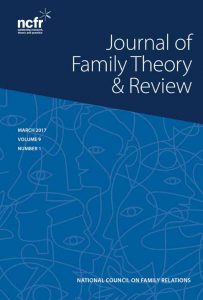Empowerment in Action: How Women’s Choices Safeguard Food Security in Uganda

In many parts of the world, women play a crucial role in agriculture and food production. Their contributions to farming, fishing, and livestock keeping are significant for food security and nutrition, especially in rural communities. However, women often face challenges that limit their ability to make decisions about what food is grown, prepared, and consumed in their households. Understanding the link between women’s overall empowerment and their specific agency in nutrition can provide valuable insights into improving food security and nutrition outcomes for themselves and their households, including children. In an article published in World Food Policy, my colleagues and I provided evidence that sheds light on this critical connection.
In simpler terms, empowerment is the capacity to make important life choices when this capability has been previously withheld. A crucial aspect of empowerment is “agency,” which refers to the ability to set and pursue goals. To put it more plainly, agency involves making decisions and taking actions. For example, in the context of women’s nutrition, it means actively participating in decisions about their diet and food purchases within the household that contribute to their well-being. This involves processes like providing access to nutritious food, increasing nutrition knowledge, and supporting individuals in making decisions related to their nutrition and health.
In this study, we gauged women’s control over nutrition in four aspects: (a) their everyday diet choices, including what foods to prepare and consume; (b) dietary decisions during pregnancy, covering choices like eggs, milk, and meat; (c) dietary considerations during breastfeeding (similar to b); and (d) their authority in purchasing food and supplements for themselves or their households, involving decisions about buying food items, medications, and supplements.
The Discovery
Our study focused on Uganda, where the prevalence of anemia (23%), underweight (9%), and overweight or obesity (24%) among women of reproductive age raised concerns about micronutrient deficiencies (e.g., iron and zinc) and overall diet quality. Additionally, the recent report of the United Nations Food and Agriculture Organization in 2023 showed that, on average, 74% of the population in Uganda experienced moderate or severe levels of food insecurity in 2020–2022. This suggests that most Ugandans, including women and children, do not have access to sufficient, safe, and nutritious food.
This research delved deep into women’s lives in rural fishing villages, where staple foods like plantains, cassava, rice, and white maize were dietary mainstays. These staples often fall short of providing the necessary nutrients, especially for vulnerable groups like women and adolescent girls.
Enter the NutriFish project, a novel initiative aimed at enhancing food security and livelihoods in these communities. NutriFish strived to increase the availability, accessibility, and consumption of nutritious small fish in diets. The project’s broader goal was to enhance food security and livelihoods, particularly for vulnerable groups like women and adolescent girls. The project had a three-pronged approach: (a) group-based training for men and women, (b) nutrition behaviour change, and (c) gender sensitization. What sets it apart is its commitment to empowering women and promoting gender inequalities in these fishing communities. Our study included 380 rural women from fishing villages near Lakes Victoria and Albert in Uganda.
Understanding Challenges Women Face
Breaking down the numbers offers a closer look at the hurdles women in our study were navigating.
Looking at the women’s backgrounds, only 26% of moms had higher education degrees (secondary, tertiary, or beyond), and most of them were under 45 years old. More than half were working in the fisheries sector.
Interestingly, a significant 81% of women could decide what foods to prepare and eat, showing they have a say in their regular diets. Among the 380 women in our study, 152 had experienced pregnancy or childbirth in the past two years. In these cases, 76% and 80% reported having a say in their diet during pregnancy and while breastfeeding. However, when it came to buying food, only 69% had a say in these decisions.
Out of all the women involved, only 37% were considered food secure, and just 26% were recognized as empowered. This means that fewer than one-third of the women met the criteria in nine out of the twelve indicators used to measure overall empowerment. These indicators cover things like having control over income, self-efficacy (believing in one’s abilities to improve one’s situation), negative attitudes towards intimate partner violence, having respect among household members, managing work-life balance, owning land and other assets such as fishing boat and gears, and accessing financial services.
Considering these specific empowerment indicators, only 33% of women earned respect among household members, including husbands and mothers-in-law, marking the lowest score among the 12 indicators. Also, 70% faced challenges in achieving work-life balance, meaning 70% had to work more than 10.5 hours per day. Almost half of women (56%) had access to financial services and could decide about their credit status. Joining community groups and being an active member of at least ONE group that can influence the community was another hurdle for 43% of women. Moreover, only 45% of women held a negative attitude toward domestic violence. This means that more than half believed a husband is justified in hitting or beating his wife in various scenarios, like going out without telling him, neglecting the children, arguing with him, refusing to have sex, or burning the food.
These numbers highlight the challenges women are dealing with in achieving full empowerment. Recognizing and addressing these challenges are vital steps toward creating interventions that truly uplift women and contribute to more equitable and empowered communities.
The Power of Women’s Decision-making in Purchasing Food
The research found a robust relationship: women were significantly more likely to be food secure when empowered and had more voice in household food purchase decisions. The household food purchase decisions included women’s having a say in purchasing small or large amounts of foods, medication, vitamins or supplements, eggs, milk or milk products, meat, poultry, and fish.
Let’s put some numbers to this discovery to truly grasp its magnitude.
Among women in the study, 69% had control to decide on the above food items for themselves and their households. When these women were also empowered in agriculture, their food security was more likely 33 percentage points higher than women who had no say in food purchase decisions, and neither was empowered in agriculture. This means that they were more likely to have access to enough food to meet their daily needs than those lacking empowerment in agriculture and food purchases.
This finding underscores the importance of women’s involvement in deciding what food to bring into their households. In essence, these women held the reins not just in growing crops or catching/processing fish but also in choosing the foods that would grace their tables. Their agency played a pivotal role in ensuring themselves and their households had enough to eat. This suggests that interventions should consider strengthening women’s role in deciding what food to buy for themselves and their households.
A Pathway to Food Security
Our study’s findings open up new pathways to addressing food security. Instead of viewing women’s empowerment solely through the lens of agricultural production or catching/processing fish, we must recognize the power of choice in food purchase decisions. We can take significant strides toward improving food security by strengthening women’s roles in these decisions.
Imagine a household where a woman, empowered by knowledge and resources, decides to diversify their diet by purchasing more nutritious foods. Over time, these dietary changes can profoundly affect the household’s nutrition and overall health. Now multiply this scenario across communities and regions. The ripple effect of empowering women to make informed food choices can lead to healthier lives, more resilient communities, and a brighter future for all.
Conclusion: A Call to Empower
In the lakeshores of Uganda, the power of women’s voice in food purchase decisions has been unveiled. It is a reminder that empowerment is not just about what happens in the fields or by the waters; it is about the choices made at the market, the ingredients chosen for meals, and the nourishment of households, ultimately leading to healthier lives and stronger communities.
The full research paper linked to from this article is available to read, Open Access:
Barak, F., Efitre, J., Odong, R., & Melgar-Quiñonez, H. (2023). Women’s agency in nutrition in the association between women’s empowerment in agriculture and food security: A case study from Uganda. World Food Policy, 9(2), 228–249. https://doi.org/10.1002/wfp2.12063




1099-1328/asset/dsa_logo.jpg?v=1&s=e4815e0ca3064f294ac2e8e6d95918f84e0888dd)
